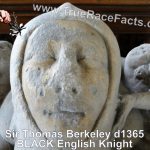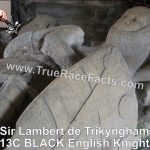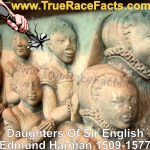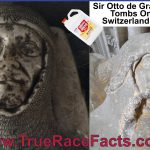1399c. Henry IV King Of England & France
- Guinevere Jackson
- 20 August 2022
- 0 Comment
Previous
Next
The House of Lancaster, a branch of the English royal House of Plantagenet, was one of the opposing factions involved in the Wars of the Roses. This civil war dominated England and Wales during the 15th century. Lancaster provided England with three Kings. Twice King of England and a central figure in the Wars of the Roses, Edward IV (28 April 1442 – 9 April 1483), established the House of York on the throne.
Henry IV, also called (1377–97) earl of Derby or (1397–99) duke of Hereford, byname Henry Bolingbroke or Henry of Lancaster, (born April? 1366, Bolingbroke Castle, Lincolnshire, England—died March 20, 1413, London), king of England from 1399 to 1413, the first of three 15th-century monarchs from the house of Lancaster. He gained the crown by usurpation and successfully consolidated his power in the face of repeated uprisings of powerful nobles. However, he was unable to overcome the fiscal and administrative weaknesses that contributed to the eventual downfall of the Lancastrian dynasty.
Henry was the eldest surviving son of John of Gaunt, duke of Lancaster, by his first wife, Blanche. Before becoming king, he was known as Henry Bolingbroke, and he received from his cousin Richard II the titles earl of Derby (1377) and duke of Hereford (1397). During the opening years of the reign of King Richard II (ruled 1377–99), Henry remained in the background while his father ran the government. When Gaunt departed for an expedition to Spain in 1386, Henry entered politics as an opponent of the crown. He and Thomas Mowbray (later 1st duke of Norfolk) became the younger members of the group of five opposition leaders—known as the lords appellants—who in 1387–89 outlawed Richard’s closest associates and forced the king to submit to their domination. Richard had just regained the upper hand when Gaunt returned to reconcile the king to his enemies. Bolingbroke then went on Crusade into Lithuania (1390) and Prussia (1392). Meanwhile, Richard had not forgiven his past enmity. In 1398 the king took advantage of a quarrel between Bolingbroke and Norfolk to banish both men from the kingdom. The seizure of the Lancastrian estates by the crown upon John of Gaunt’s death (February 1399) deprived Henry of his inheritance and gave him an excuse to invade England (July 1399) as a champion of the nobility. Richard surrendered to him in August; Bolingbroke’s reign as King Henry IV began when Richard abdicated on September 30, 1399.
Henry IV used his descent from King Henry III (ruled 1216–72) to justify his usurpation of the throne. Nevertheless, that claim did not convince those magnates who aspired to assert their authority at the crown’s expense. During the first five years of his reign, Henry was attacked by a formidable array of domestic and foreign enemies. He quashed a conspiracy of Richard’s supporters in January 1400. Eight months later the Welsh landowner Owain Glyn Dŵr raised a rebellion against oppressive English rule in Wales. Henry led a number of fruitless expeditions into Wales from 1400 to 1405, but his son, Prince Henry (later Henry V), had greater success in reasserting royal control over the region. Meanwhile, Owain Glyn Dŵr encouraged domestic resistance to Henry’s rule by allying with the powerful Percy family—Henry Percy, earl of Northumberland, and his son Sir Henry Percy, called Hotspur. Hotspur’s brief uprising, the most serious challenge faced by Henry during his reign, ended when the king’s forces killed the rebel in battle near Shrewsbury, Shropshire, in July 1403. In 1405 Henry had Thomas Mowbray, the eldest son of the 1st duke of Norfolk, and Richard Scrope, archbishop of York, executed for conspiring with Northumberland to raise another rebellion. Although the worst of Henry’s political troubles were over, he then began to suffer from an affliction that his contemporaries believed to be leprosy—it may have been congenital syphilis. A quickly suppressed insurrection, led by Northumberland in 1408, was the last armed challenge to Henry’s authority. Throughout those years the king had to combat border incursions by the Scots and ward off conflict with the French, who aided the Welsh rebels in 1405–06.
To finance these military activities, Henry was forced to rely on parliamentary grants. From 1401 to 1406 Parliament repeatedly accused him of fiscal mismanagement and gradually acquired certain precedent-setting powers over royal expenditures and appointments. As Henry’s health deteriorated, a power struggle developed within his administration between his favourite, Thomas Arundel, archbishop of Canterbury, and a faction headed by Henry’s Beaufort half brothers and Prince Henry. The latter group ousted Arundel from the chancellorship early in 1410, but they, in turn, fell from power in 1411. Henry then made an alliance with the French faction that was waging war against the prince’s Burgundian friends. As a consequence, tension between Henry and the prince was high when Henry became totally incapacitated late in 1412. He died several months later, and the prince succeeded as King Henry V.
“They have taken crafty counsel against thy people, and consulted against thy hidden ones. They have said, Come, and let us cut them off from being a nation; that the name of Israel may be no more in remembrance. For they have consulted together with one consent: they are confederate against thee:” The tabernacles of Edom, and the Ishmaelites; of Moab, and the Hagarenes;
Psalms 83: 3-6 KJV
Article Citation: “Henry IV”Encyclopedia Britannica, Accessed 20 August 2022. Official Portrait NPG 4980(9) (National Portrait Gallery) artwork ID: mw03072 – Monument: The tomb of Henry IV and Joan of Navarre in Canterbury Cathedral. Wikipedia Author Nilfanion e Creative Commons 4.0 – Coin AQUITAINE – DUCHY OF AQUITAINE – HENRY IV-cgb.fr
Disclaimer: True Race Facts have made the long overdue honest determination that the King was dark brown, aka BLACK of the Hebrew, Shemitic negro race. Based on his facial phenotype, lips and thick braided hairstyle. Authentic original coins are the most accurate determination to identify the King because he would have approved the coins before they were hammered and issued. There are many ancient FAKE coins on the market, so beware when looking at coins. The deceivers made it their mission to cover up the dark ages, so even history should now be considered pseudo-history.













